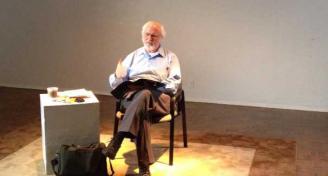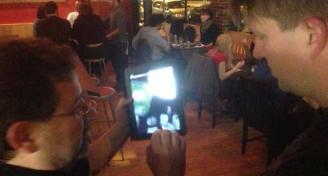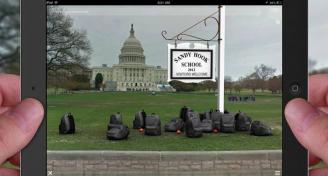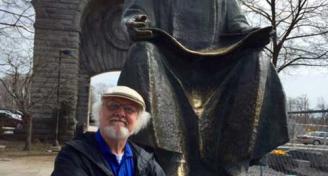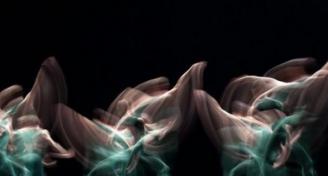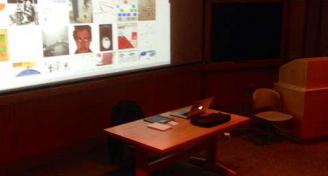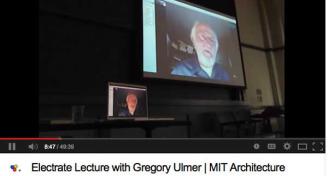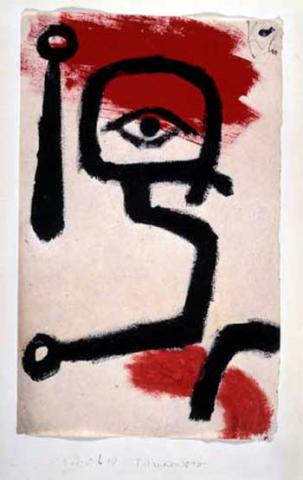
Finitude
To open the probe, "Kettledrummer" (1940), a late work by Paul Klee culmination of a series of "drummer" paintings. The series alludes to an image that haunted Klee at the end of his life, the scene of Mozart on his death bed, delirious, gesturing as if playing the kettledrums of his "Requiem" Mass. Merleau-Ponty, in his final project, developed his phenomenological ontology with reference especially to Klee (even more than Cezanne). Merleau-Ponty cited Klee's diaries, from a passage that is the epitaph on Klee's tomb. "I cannot be grasped in the here and now. For I live just as well with the dead as with the unborn, somewhat closer to the heart of creation than usual, but far from close enough."

Merleau-Ponty's choice of the work by Klee to serve as emblem for his image ontology was "Park at Luzerne." The late (unfinished) projects of Mozart, Klee, and Merleau-Ponty mark the existential aporia of finitude, opening onto General Economy, the register of fundamental circulation relevant to EmerAgency consulting.
Share this
Comments

Walter Benjamin

Let us not forget in this discussion of Klee's importance as a guide to learning electrate imaging that Walter Benjamin
purchased one of Klee's angels ("Angelus Novus"), and referred to it as the "Angel of History."
http://www.sfu.ca/~andrewf/CONCEPT2.html

